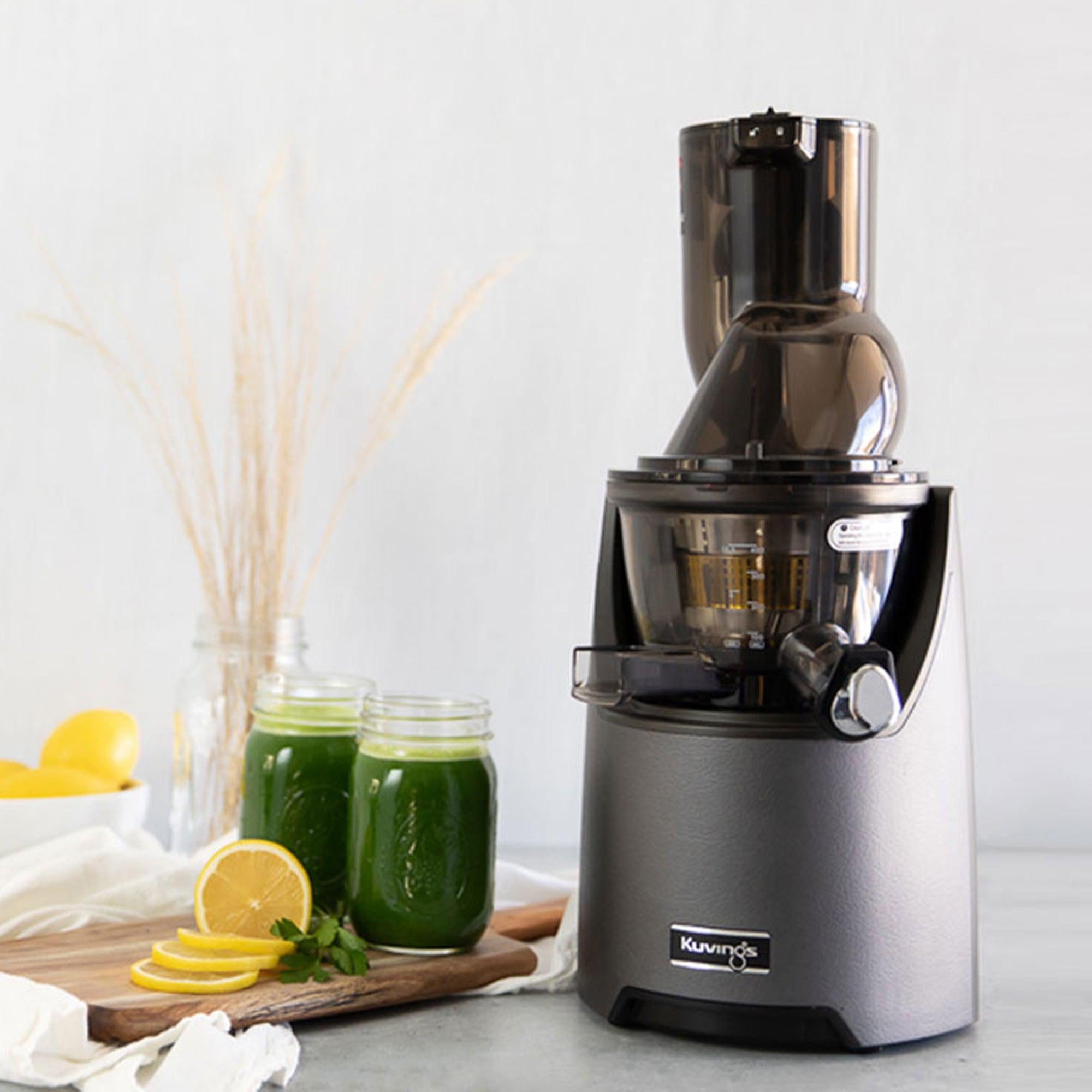In the same way, New Year’s resolutions help us think of long-term change, so does sustainable living.
Sustainable living is making conscious decisions to have lower negative impact on our environment and preserve it as best as possible.
Embrace sustainability in every aspect of your life, including your juicing routine. Adopting these eco-conscious choices while juicing can help you live a more sustainable lifestyle:
1. Make juices at home
Did you know that Americans use about 500 billion plastic bottles each year?
While water bottles may be the first association with plastic, it's important to note that store-bought juice also comes in single-use plastic bottles.
Despite plastic being biodegradable, it sticks around in the environment for a long time because it takes tens to hundreds of years to break down. Therefore, plastic juice bottles contribute to plastic pollution.
An effective strategy to reduce plastic usage and waste is by juicing at home with a quality juicer and storing your juice in reusable bottles.
Reusable bottles like stainless steel bottles or glass jars are easy to clean and protect your juice from potential plastic chemical contamination.
Overall, juicing at home promotes the use of reusable materials and actively contributes to less plastic pollution and overall waste.
2. Juice organic produce
Opting for organic produce in your juicing routine enables you to juice ingredient peels, effectively minimizing food waste.
Organic produce peels can be juiced because organic produce is grown without the use of synthetic fertilizers and pesticides, lowering the chances of contamination.
On the contrary, non-organic produce is grown using synthetic chemicals, raising concerns about the presence of these chemicals on the peels, making them potentially unsafe for juicing. Consequently, the peels are discarded, contributing to food waste.
Conventional farming also contributes to environmental issues such as soil degradation, increased greenhouse gas emissions, pesticide accumulation, and a decline in water quality and availability.
Therefore, juicing at home with organic produce reduces waste, assures consumers of safety, and supports the demand for pesticide-free options, promoting safer and Earth-friendly consumption.
It’s important to note that not all juicers can handle peels. Kuvings juicers can juice most peels. Read our peeling guide to learn which ingredients can be inserted unpeeled in our juicers.
3. Switch to plant-based milk
Transitioning from dairy milk to plant-based milk offers a more environmentally friendly choice, given the lower environmental impact associated with plant-based milk production compared to traditional dairy milk.
A comprehensive study by Our World In Data analyzed the environmental footprints of dairy and plant-based milk, considering key metrics like greenhouse gas emissions, land use, water consumption, and eutrophication – the pollution of ecosystems with excess nutrients.
The findings reveal that cow’s milk:
-
Emits approximately three times more greenhouse gas
-
Uses approximately ten times more land
-
Uses two to twenty times more freshwater, and
-
Creates much higher levels of eutrophication.
To further minimize the environmental impact of plant-based milk production, make plant-based milk at home with a Kuvings juicer. Our plant-based milk guide lists the plant milk varieties you can create using our juicers.
4. Repurpose your pulp
To be more climate-conscious, reuse your juice pulp and engage in zero-waste juicing.
Waste is a big topic of concern with food because it means wasting the energy and water used to grow, harvest, transport, and package it. Discarded food also ends up in landfills that emit greenhouse gases, which contribute to global warming and climate change.
Prevent pulp from becoming waste by adding pulp to your recipes.
Watch this video featuring @haroldleffall as he demonstrates the process of making cashew milk using the Kuvings AUTO10 and repurposing the pulp to create protein-packed energy bites!
Apart from incorporating pulp into recipes, consider composting your pulp.
Composted pulp is a great natural fertilizer, providing the three primary nutrients—nitrogen, phosphorus, and potassium—essential for the growth of garden crops. Utilizing natural fertilizers eliminates reliance on synthetic fertilizers containing harmful chemicals.
Enhance the well-being of your garden, especially if you grow your own ingredients for juicing, with nutrient-rich compost from your juice pulp.
5. Unplug your juicer
Individuals who designate a spot for their juicer in the kitchen often tend to leave it plugged in, assuming it's harmless when not in use.
However, plugged-in juicers still draw some energy even when turned off.
The minimal electricity consumption from keeping your juicer plugged in can accumulate over time, leading to increased usage and a higher electricity bill. Unplugging your juicer can effectively save you money in the long run.
Leaving your juicer plugged in also poses a potential risk of electrical fires.
These notes extend beyond juicers to any appliance or device left plugged in. Establish a habit of unplugging your juicer and other appliances when not in use to conserve electricity, save money, and mitigate potential hazards.
Explore the other posts of our “Juicing in the New Year” series: 6 Money-Saving Tips and 6 Healthy Habits.
____
REFERENCES:
https://www.inspirecleanenergy.com/blog/sustainable-living/does-unplugging-appliances-save-electricity
https://www.jerseyislandholidays.com/plastic-bottle-pollution-statistics/
https://www.nrdc.org/stories/composting-101
https://ourworldindata.org/environmental-impact-milks
https://www.sciencedirect.com/science/article/abs/pii/B9780081030172000027
https://www.unep.org/news-and-stories/story/how-composting-can-reduce-our-impact-planet
https://www.worldwildlife.org/stories/fight-climate-change-by-preventing-food-waste
Image by Freepik

















